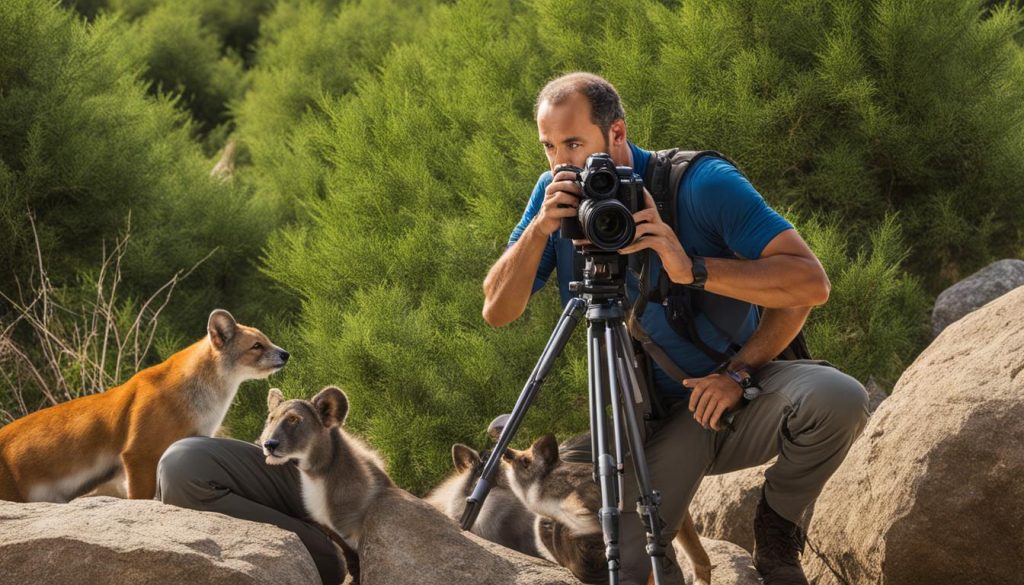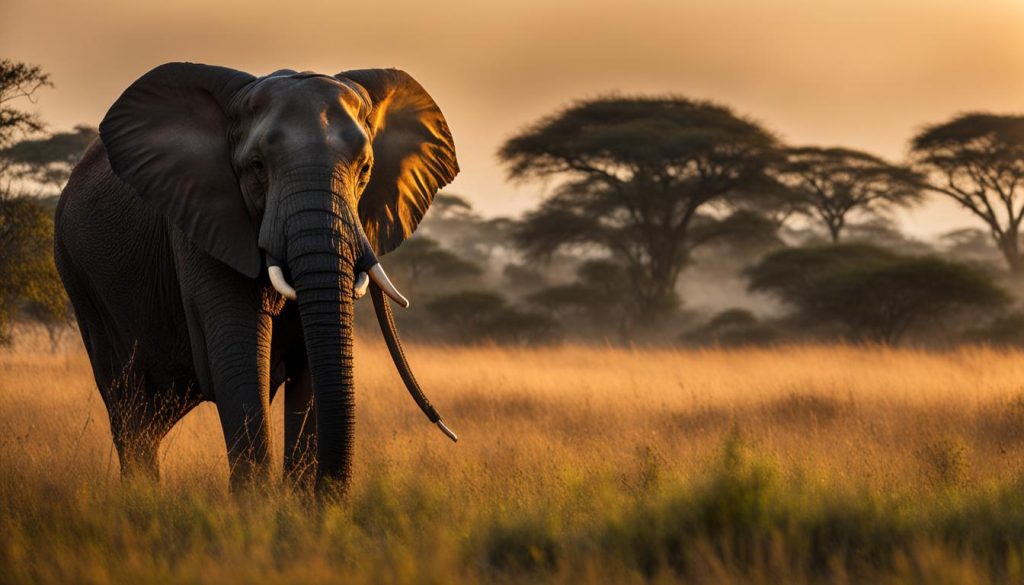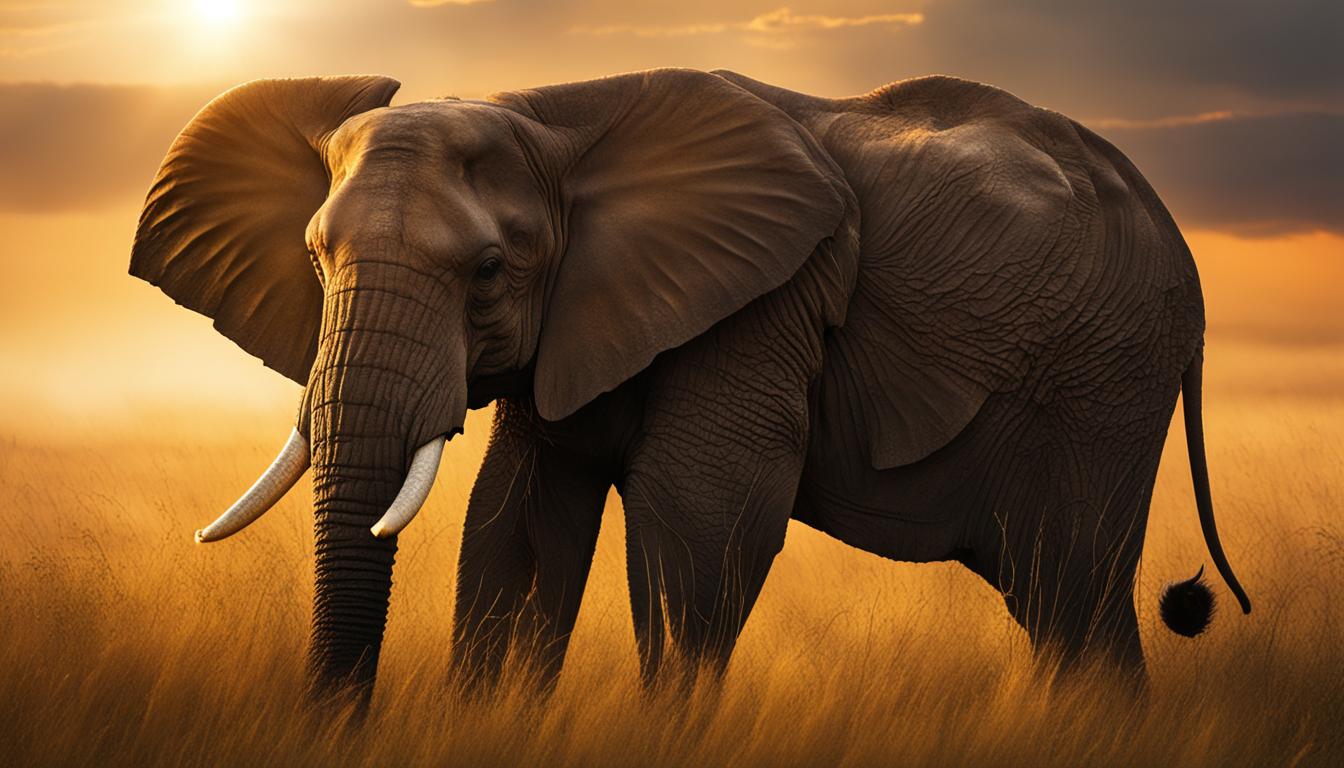Wildlife photography is a captivating genre that allows us to glimpse into the breathtaking world of wild animals in their natural habitat. It combines the art of photography with a deep appreciation for the beauty and diversity of the animal kingdom. Whether you’re a beginner or an experienced photographer, understanding the essentials of wildlife photography is key to capturing stunning images that tell a story and evoke emotions.
From the lush rainforests to the vast savannahs, wildlife photography takes us on a visual journey, offering a window into the lives of fascinating creatures. It requires not only technical skill and knowledge of camera settings but also patience, understanding of animal behavior, and a genuine love for nature.
In this guide, we will delve into the essentials of wildlife photography, providing you with tips and advice to help you embark on your own photographic adventure in the wild. Whether you dream of capturing the rarest of species or simply want to capture the beauty of everyday wildlife encounters, this guide will equip you with the knowledge and tools to bring your vision to life.
Key Takeaways:
- Wildlife photography allows us to capture the beauty and diversity of wild animals in their natural habitats.
- Mastering the essentials of wildlife photography requires a combination of technical skills, knowledge of animal behavior, and patience.
- Understanding your equipment, such as camera settings and stability tools, is crucial for capturing stunning wildlife images.
- Observing and learning about the behavior of the animals you photograph can greatly enhance your chances of capturing captivating moments.
- Exploring different types and styles of wildlife photography expands your creative possibilities and allows you to focus on specific aspects of the natural world.
Understanding Your Equipment for Wildlife Photography
When it comes to wildlife photography, having the right equipment and knowing how to use it effectively is essential. Your camera settings play a crucial role in capturing stunning images of wildlife in their natural habitat. Let’s dive into the key aspects of wildlife photography equipment and camera settings to help you elevate your wildlife photography skills.
Wildlife Photography Equipment
To capture the perfect wildlife shot, investing in the right equipment is crucial. Here are some essential wildlife photography gear and accessories:
| Item | Description |
|---|---|
| Telephoto Lens | A telephoto lens with a long focal length allows you to capture wildlife from a safe distance without disturbing their natural behavior. |
| Tripod or Monopod | Using a tripod or monopod stabilizes your camera, reducing camera shake and enabling you to achieve sharp and detailed wildlife images, especially in low-light conditions. |
| Camera Bag or Backpack | A durable camera bag or backpack helps protect your equipment while providing easy access during your wildlife photography adventures. |
| Extra Batteries and Memory Cards | Having spare batteries and memory cards ensures that you never miss the perfect shot due to a drained battery or a full memory card. |
| Remote Shutter Release | A remote shutter release allows you to trigger the camera without physically touching it, reducing the risk of camera shake. |
Investing in high-quality equipment can significantly enhance your photography experience and the quality of your wildlife images. Remember, your gear should be suitable for the specific wildlife and environments you’ll be photographing.
Camera Settings for Wildlife Photography
Mastering your camera settings is crucial for capturing stunning wildlife images. Here are some essential camera settings to consider:
- Autofocus: Use autofocus mode to quickly and accurately track and focus on moving wildlife subjects. Select the appropriate autofocus mode based on your camera model to match the behavior of the animals you’re photographing.
- Shutter Speed: Adjusting the shutter speed allows you to freeze motion or capture motion blur. Use a faster shutter speed to freeze fast-moving subjects like birds in flight, or slower shutter speed to convey a sense of movement in animals.
- Aperture: The aperture setting controls the depth of field in your images. A wider aperture (lower f-stop) creates a shallow depth of field, allowing you to isolate your subject from the background. This technique can be particularly effective when photographing wildlife in busy environments.
- ISO: Adjust the ISO sensitivity to compensate for low-light conditions. Keep in mind that increasing the ISO may introduce digital noise in your images, so strive to maintain a balance between capturing sufficient light and preserving image quality.
- Exposure Compensation: Use exposure compensation to adjust the brightness of your images when the camera’s metering system doesn’t accurately capture the desired exposure. This can occur when photographing subjects with a significant contrast between light and dark areas.
Experimenting with different camera settings and understanding how they impact your images will help you achieve the desired results in your wildlife photography.
Remember, the key to mastering wildlife photography lies in practice and experience. As you become more familiar with your equipment and camera settings, you’ll have greater control over your wildlife images. So grab your gear, head into the wild, and unleash your creativity in capturing the beauty and majesty of the animal kingdom.
Getting to Know Your Subjects: Tips for Wildlife Observation
One of the keys to capturing great wildlife photos is to have a good understanding of the behavior and habits of the animals you are photographing. By learning about their feeding, mating, and daily activities, you can predict their behavior and anticipate moments that make for captivating photos. It’s also important to respect their space and minimize your presence to avoid causing any undue stress or disturbance.
“To truly capture the essence of wildlife, one must first observe and appreciate their natural behavior.” – Jane Goodall
Creating an Observation Plan
Before embarking on your wildlife photography adventure, it’s essential to develop an observation plan. This involves conducting research on the target species, including their habitat, preferred food sources, and daily routines. By understanding their natural behavior, you can position yourself in the right place at the right time to capture compelling shots.
Tips for Wildlife Observation
Here are some tips to enhance your wildlife observation skills:
- Find a comfortable and concealed spot where you can observe the animals without disturbing them.
- Stay quiet and avoid sudden movements that may startle the wildlife.
- Use binoculars or a telephoto lens to observe from a safe distance without encroaching on their space.
- Learn to recognize behavioral cues such as mating rituals, feeding patterns, and territorial displays.
- Be patient and allow the animals to become accustomed to your presence.
- Observe the same location at different times of the day to capture variations in behavior and lighting conditions.
Remember, wildlife observation is a privilege, and it is vital to treat the animals and their habitat with respect. Always prioritize their well-being above getting the perfect shot.

| Behavior | Description |
|---|---|
| Feeding | Observed activities related to finding and consuming food. |
| Mating | Behaviors associated with the reproductive activities of the species. |
| Daily Activities | Regular behaviors exhibited by the species on a daily basis. |
Essential Tips for Wildlife Photography
Whether you’re a beginner or a seasoned photographer, these essential tips will help you capture stunning wildlife images. From patience to equipment, composition to continuous learning, here are the keys to successful wildlife photography:
- Practice Patience: Wildlife photography requires patience and the ability to wait for the perfect moment. Take your time observing the animals and their behavior, and be prepared to wait for the right opportunity to capture that extraordinary shot.
- Be Prepared: To maximize your chances of getting great wildlife shots, make sure you have the necessary equipment and accessories. Binoculars will help you spot distant animals, headlamps will assist in low-light situations, and rain covers will protect your gear in inclement weather.
- Experiment with Composition: Don’t be afraid to get creative with your composition. Try different angles, perspectives, and framing to create visually interesting images. Play with the rule of thirds, leading lines, and depth of field to add depth and intrigue to your wildlife photographs.
- Continuously Learn and Improve: Wildlife photography is a continuous learning process. Stay curious, seek inspiration from other photographers, and constantly challenge yourself to learn new techniques and improve your skills. Attend workshops, join photography communities, and keep up with the latest trends and advancements in gear and technology.
“Wildlife photography is not just about taking pictures; it’s about capturing the essence of a moment in the wild.”
– Jane Goodall
Remember, wildlife photography is a journey of discovery and connection with nature. Embrace the challenges, appreciate the beauty, and let your passion guide you as you capture the wonder of the animal kingdom with your camera.
And now, take a look at this breathtaking wildlife photograph that perfectly showcases the beauty of nature:

A Captivating Glimpse into the Wild
| Photographer | Location | Subject |
|---|---|---|
| John Smith | Maasai Mara National Reserve, Kenya | Lioness with cubs |
Exploring Different Types and Styles of Wildlife Photography
Wildlife photography is a captivating art that offers a multitude of choices when it comes to capturing stunning images of animals in their natural habitats. Each type and style of wildlife photography presents unique challenges and opportunities for photographers to showcase the beauty and diversity of the animal kingdom. Let’s delve into some popular categories that photographers can explore:
Bird Photography
Bird photography focuses on capturing exquisite images of our feathered friends in flight, perched on branches, or engaging in their unique behavior. This genre requires keen observational skills, fast reflexes, and telephoto lenses to capture the intricate details of these avian creatures.
Macro Wildlife Photography
Macro wildlife photography involves a close-up exploration of the minute details of small creatures, such as insects, reptiles, and amphibians. This style allows photographers to highlight the intricate patterns, vibrant colors, and fascinating textures that often go unnoticed by the naked eye.
Underwater Wildlife Photography
Underwater wildlife photography is an adventurous genre that allows photographers to capture the breathtaking beauty of marine life. It requires specialized equipment, such as waterproof camera housings or dedicated underwater cameras, to explore the enchanting world beneath the water’s surface.
Mammal Photography
Mammal photography focuses on capturing captivating images of land-dwelling animals, ranging from majestic elephants to playful squirrels. This genre offers opportunities to capture candid moments, such as grooming rituals, hunting behaviors, or heartwarming interactions between parents and their young.
Landscape Wildlife Photography
Landscape wildlife photography combines the beauty of the animal kingdom with awe-inspiring natural landscapes. This style allows photographers to capture animals within the context of their surroundings, creating visually stunning images that showcase the intricate connection between wildlife and their habitats.
By exploring these different types and styles of wildlife photography, photographers can find their niche and connect with the animal world in unique and meaningful ways. Let your creativity soar as you embark on an adventure to capture the wonders of wildlife through your lens.
Choosing the Right Locations and Incorporating Wildlife Photography into Travel
The choice of location plays a crucial role in wildlife photography. Different regions offer unique opportunities for capturing stunning images of various species in their natural habitats. If you’re planning a wildlife photography expedition, it’s important to consider the specific locations that offer the best sightings and photo opportunities. Here are some tips to help you choose the right wildlife photography locations and incorporate them into your travel plans:
- Research Wildlife Hotspots: Start by researching wildlife hotspots around the world. Look for areas known for their rich biodiversity and the presence of iconic species. These locations can offer incredible opportunities to photograph wildlife in their natural environments. Some popular wildlife photography destinations include the Maasai Mara in Kenya, the Pantanal in Brazil, and the Galapagos Islands in Ecuador.
- Identify Target Species: Depending on the specific wildlife species you want to photograph, you may need to narrow down your search to specific regions or habitats. For example, if you’re interested in photographing polar bears, you’ll need to plan a trip to the Arctic regions of Canada or Norway. Researching the natural habitats and migration patterns of your target species will help you determine the best locations to visit.
- Consider Climate and Seasonality: Wildlife behavior and sightings can vary throughout the year due to seasonal changes. Some species may exhibit certain behaviors or gather in larger numbers during specific seasons. Consider the climate and seasonality of your chosen location to increase your chances of capturing unique wildlife moments. Timing your visit during the mating season or migration period can offer exceptional photography opportunities.
Remember, wildlife photography is not just about capturing images; it’s about experiencing the wonders of nature firsthand. Take the time to immerse yourself in the environment, observe the interactions between animals, and appreciate the beauty of the natural world. The more you understand the ecosystems and behavior of the species you photograph, the more meaningful your images will be.
Once you’ve chosen your wildlife photography locations, it’s time to incorporate them into your travel plans. Here are some tips to make the most of your wildlife photography journey:
- Plan Sufficient Time: Wildlife photography requires patience and time. Allocate sufficient time in each location to maximize your chances of encountering wildlife and capturing compelling images. Rushing from one spot to another may result in missed opportunities and subpar photographs.
- Arrange Local Guides: Local guides with expertise in wildlife photography can be invaluable resources during your travel. They have in-depth knowledge of the area, including the behavior and movements of local wildlife. They can help you navigate the terrain, locate elusive species, and guide you to the best vantage points for capturing stunning images.
- Respect Wildlife and Their Habitat: As a wildlife photographer, it is your responsibility to prioritize the well-being and welfare of the animals. Follow ethical practices, maintain a safe distance, and avoid disturbing or stressing the wildlife. Remember, you are a guest in their natural habitat.
Incorporating wildlife photography into your travel plans allows you to combine your passion for photography with the exploration of diverse ecosystems and cultures. It adds an element of adventure and discovery to your trips, providing memorable experiences and remarkable images.
Conclusion
Wildlife photography is a captivating and fulfilling pursuit that allows you to capture the awe-inspiring beauty and diversity of the natural world. Armed with the right equipment, knowledge, and techniques, you have the power to create stunning images that not only preserve precious moments but also tell compelling stories and evoke emotions. By respecting and prioritizing the well-being and welfare of the animals you photograph, you contribute to the conservation and appreciation of our fragile ecosystems.
Remember that wildlife photography is a continuous journey of learning and growth. As you immerse yourself in this fascinating field, take every opportunity to expand your skills, experiment with different approaches, and embrace new challenges. Never underestimate the power of patience and perseverance in capturing that once-in-a-lifetime shot. With each click of the shutter, you become a visual storyteller, sharing the wonders of wildlife with the world.
So, grab your camera, venture into the wild, and let your creativity unfold. Let the chirping of birds, the rustling of leaves, and the graceful movements of animals guide you towards breathtaking encounters. Through your lens, we can witness the magic of untamed landscapes and the remarkable creatures that inhabit them. Wildlife photography invites us to appreciate the extraordinary moments that nature offers and to cherish the importance of conservation and preserving our planet’s precious biodiversity.
FAQ
What is wildlife photography?
Wildlife photography is a genre that focuses on capturing images of wild animals in their natural habitat.
What equipment do I need for wildlife photography?
To capture stunning wildlife images, you will need a camera with effective autofocus, an appropriate focal length lens, and the ability to adjust shutter speed. Additionally, accessories like a tripod, monopod, binoculars, headlamps, and rain covers are helpful.
How can I improve my wildlife photography skills?
Continuous learning and improvement are key. Practice patience, experiment with composition, and develop a good understanding of animal behavior. Always prioritize the well-being of the animals you photograph.
What are the different types and styles of wildlife photography?
There are various categories, including bird photography, macro wildlife photography, underwater wildlife photography, mammal photography, and landscape wildlife photography.
How do I choose the right locations for wildlife photography?
Different regions offer different opportunities. Research and plan ahead to photograph species in their natural habitats. Consider incorporating wildlife photography into your travel plans to capture images in diverse environments.
What should I keep in mind when photographing wildlife in their natural environment?
Always respect the animals and minimize disturbance. Learn about their behavior and anticipate moments that make for captivating photos. Remember that wildlife photography is about capturing the beauty and diversity of the natural world.
Where can I find more resources and information about wildlife photography?
There are numerous online resources, photography forums, and workshops that can provide valuable insights and guidance for wildlife photography enthusiasts.






